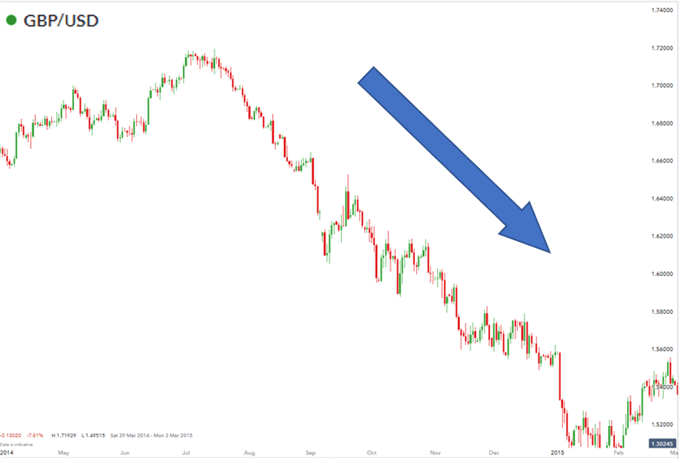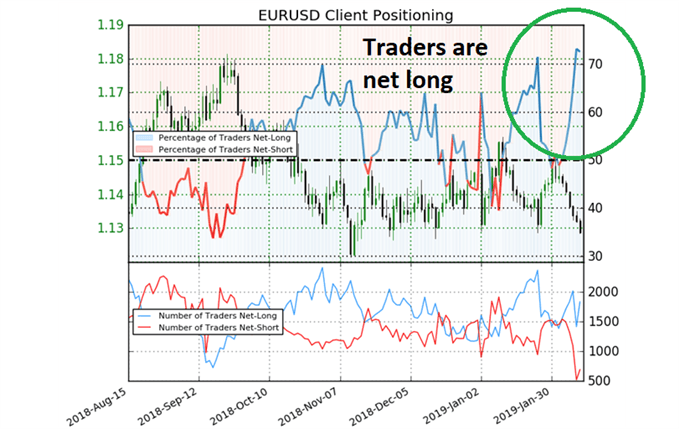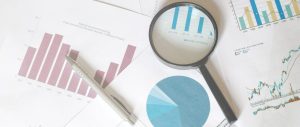Forex analysis techniques talking points:
- There are three general types of forex analysis traders use to anticipate market movements and analyse trends.
- Traders tend to use one or a combination of FX analysis methods to fit their personality and/or trading style.
- It can be useful to identify trades using the analytical approach in a forex practise account
There are several different ways to analyze the FX market in anticipation of trading. Although categories of analysis may be plentiful, traders should keep the analysis simple enough to identify good trading opportunities.
This article explores the three most common forex analysis techniques: Fundamental, technical and sentiment analysis, and how they help to shape a trading strategy. Thereafter, it is up to the individual trader to try find out what type of analysis suits there trading style.
The 3 Most Common Types of Forex Analysis:
1) Fundamental analysis
Forex fundamentals center mostly around the currency’s interest rate. This is due to the fact that interest rates have a sizeable effect on the forex market. Other fundamental factors are included such as gross domestic product, inflation, manufacturing, economic growth activity. However, whether those other fundamental releases are good or bad is of less importance than how those releases affect that country’s interest rate.
Traders reviewing the fundamental releases should keep in mind how they might affect the future movement of interest rates. When investors are in a risk-seeking mode, money follows yield (currencies that offer a higher interest rate), and higher rates could mean more investment. When investors are in a risk adverse mentality, then money leaves yield for safe-haven currencies.
Check out the economic calendar for events coming up this week.
2) Technical analysis
Forex technical analysis involves looking at patterns in price history to determine the higher probability time and place to enter a trade and exit a trade. As a result, technical analysis in forex is one of the most widely used types of analysis.
Since FX is one of the largest and most liquid markets, the movements on a chart from the price action generally gives clues about hidden levels of supply and demand. Other patterned behavior such as which currencies are trending the strongest can be obtained by reviewing the price chart. An example of this can be seen below in the GBP/USD chart where the US dollar is strengthening against the Pound Sterling.

Other technical studies can be conducted through the use of forex indicators. Many traders prefer using indicators because the forex signals are easy to read, and it makes forex trading simpler.
Technical versus fundamental analysis in forex is a widely debated topic. There is no right answer to the question of which type of analysis is better and traders tend to adopt one, or a combination of the two, in their analysis.
3) Sentiment analysis
Forex sentiment is another widely popular form of analysis. When you see sentiment overwhelmingly positioned to one direction, this means the vast majority of traders are already committed to that position.
Perhaps this can be better explained with an example. Let’s assume that an overwhelming number of traders and investors are bullish the Euro. They think the Euro is going higher. Since people vote with their trades, we can assess that the EUR/USD sentiment shows a majority of traders are buyers in the currency pair.

There are many traders who have already BUYED, these buyers become the future suppliers of the sellers. We know this because eventually they will want to close the deal. This leaves the EUR/USD vulnerable to a sharp pullback if those buyers reverse and sell to close the trades. More astute traders will analyze retail sentiment along with institutional sentiment.
RECOMMENDATIONS
We have created innovative HIGH GAIN PROFIT robot,
We recommend our BEST ROBOT FOREXVPORTFOLIO v11, which is already being used by traders all over the world, successfully making unlimited profits over and over again.
For beginners and experienced traders!
You can WATCH LIVE STREAMING with our success forex trading here

How to apply forex techniques to your trades
Traders can utilize a mix of all three types of forex market analysis. This can be done by:
- Identifying long term trends with the use of fundamental analysis
- Pin-pointing ideal entry points using technical analysis and accompanying indicators
- Making use of client sentiment as the last check box before entering the trade.
How to analyze forex market trends with the 3 analysis techniques:
1) Use fundamentals to assist in identifying a long-term trend:
Analyzing a country’s GDP, interest rate and inflation rate provides insight on the strength of that country’s economy and by extension, their currency. For example, if the US begins an interest rate hiking cycle, the US dollar will look attractive. If enough investors/traders buy US dollars this will prop up the value of the USD.
2) Apply sound technical analysis to spot entries into the market:
Using multiple time frame analysis and an indicators MACD or RSI (Relative Strength Index), traders can spot ideal entries into the market.
3) Consider client sentiment:
Traders can analyze client sentiment either by observing the net number of traders long or short, or by trading the difference in net short/long movements. The main takeaway however, is that retail clients tend to trade against prevailing trends therefore, making client sentiment a contrarian indicator.



 Signal2forex.com - Best Forex robots and signals
Signal2forex.com - Best Forex robots and signals




